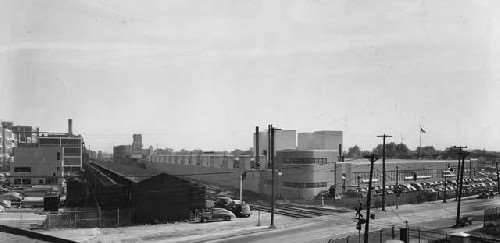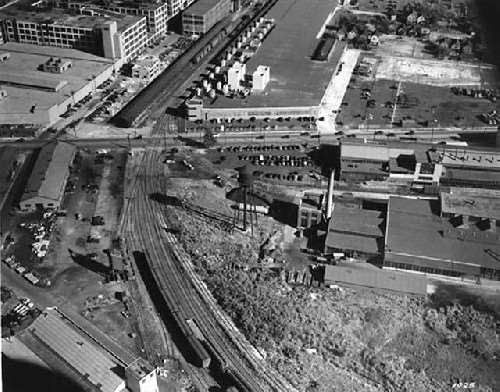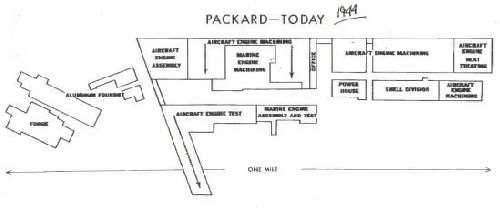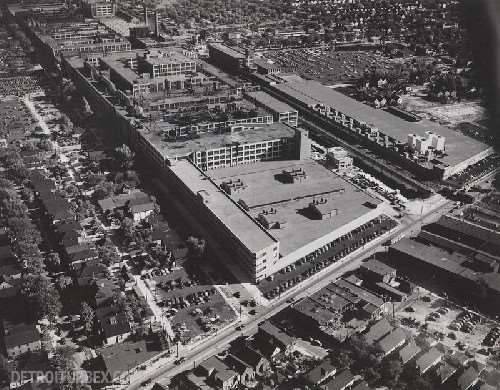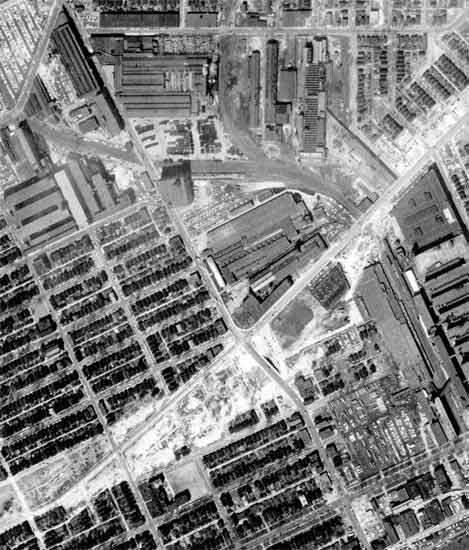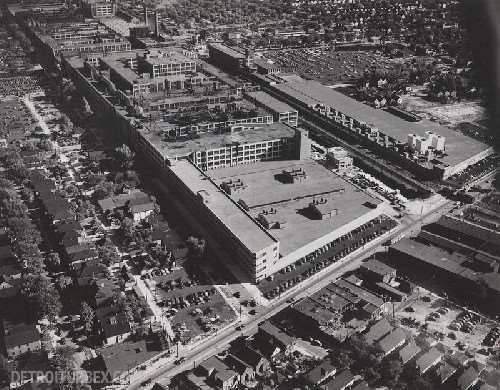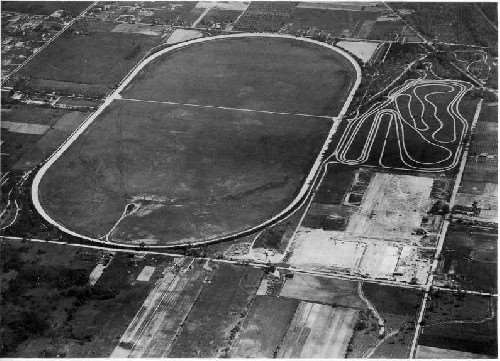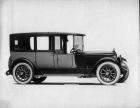|
Re: One Story Assembly Plant What If?
|
||||
|---|---|---|---|---|
|
Home away from home

|
<i>BTW, the actual address of the PPG is 49965 Van Dyke. We are having a car show (Cars-R-Stars @ the PPG) on Sunday, June 8th. I will be working the Main Gate all day long. Come on out and introduce yourself.</i>
Thanks. I used the 50500 Mound address as that is what I found when I was trying to locate the plant some time ago. The Gilmore has a vintage motorcycle show on the 8th, but I'm not that in to bikes. <i>Finally, we have zero records regarding Cadillac leasing the PPG, Chrysler: yes, during the war years. Cadillac; no.</i> The other account of the test track history I read was obviously in error. Thanks everyone for the correction. <i>I also have a copy of a report from AMC was preparing to buy the PPG at back in the 1960s as they were tired of going to Kenosha for their testing.</i> Some of the AMC styling guys show up at the AMC meet in Livonia each year. They all worked in the Plymouth Rd offices. I never asked them how they liked the trip to Wisconsin, but I imagine it was even less fun in the 50s when there were no freeways. Apparently they were not too worried about Ford people spying on them from the plant. The AMC track was bought by MGA Research in 88 and still exists, and still way out in the boonies outside of Kenosha. 5000 Warren Road, Burlington, Wisconsin
Posted on: 2014/5/15 20:22
|
|||
|
||||
|
Re: One Story Assembly Plant What If?
|
||||
|---|---|---|---|---|
|
Home away from home

|
I have never heard of Cadillac using PPG and think you have switched some facts around in your head since reading them.
That's certainly possible. Seems that I read somewhere that Caddie used the track in 37-38, but maybe the person that wrote what I read had it wrong.
Posted on: 2014/5/15 18:46
|
|||
|
||||
|
Re: One Story Assembly Plant What If?
|
||||
|---|---|---|---|---|
|
Home away from home

|
I'm talking about allowing close proximity of a competitor to the core of your advance product testing and development facility.
I agree, it's not ideal, but Packard could have used the $15-$20M cash that Hydramatic might have paid for the Utica plant. The track wasn't secure anyway, and it was obsolete, it didn't even have a skidpad. In the late 30s, before GM built the Milford facility, Packard leased it's track to Cadillac. <i>We seem to have our hands full just flushing all the spy photographers out of nearby tall trees!</i> When you drive eastbound on I-94, you can easily tell when you are passing the Chrysler proving grounds in Chelsea. The low fence that doesn't even keep deer off the freeway is replaced by a very tall, barb wire topped fence, with a clear kill zone on the other side, then thick forest. Chrysler didn't have a proving ground until the Chelsea facility was built in 54. Hudson never had a proving ground at all. Who knows, if Packard had sold the track to Hydramatic, along with the plant, then run it's test cars on streets more, instead of at the track, the flaws in the 55 Ultramatic might have shown up sooner and been corrected before production started.
Posted on: 2014/5/15 13:31
|
|||
|
||||
|
Merlin inspection building question
|
||||
|---|---|---|---|---|
|
Home away from home

|
Maybe someone has a copy of the issue of the Cormorant with the plant history section.
What was happening in the Merlin test and inspection building, the one west of the railroad tracks, after the war? I have been comparing photos and have a mystery. The drawing from 44 shows the building with a wing to the southwest, along Harper, where the test cells were. In the film Packard produced about their war work, there is a glimpse of this building, and it's forest of exhaust stacks on the roof. In the photo from the 40s/early 50s, that wing appears to be gone, replaced by a parking lot. There is a forest of exhaust stacks on the roof of the east side of the building, which makes me think this is where the engine line was reinstalled after the war. In the photo from 56, where the right of way for the freeway is being cleared, the north end of the inspection building has been cut back a good 100', but the western wing with the original exhaust stacks, which appears to be missing in the early 50s photo, appears, and the exhaust stacks on the east side of the building are gone, which would fit with the engine line moving to Utica two years earlier, if that is where the engine line was post war. Thanks for any help on the history of this building.
Posted on: 2014/5/15 12:04
|
|||
|
||||
|
Re: One Story Assembly Plant What If?
|
||||
|---|---|---|---|---|
|
Home away from home

|
<i>I believe Packard's offerings of the 120 and later 110 "junior" cars re-energized the company, brought middle-income buyers into its dealerships, and bolstered the company</i>
During the depression, cheap models helped everyone who offered them. Cadillac had LaSalle. A DeSoto was a cheap Chrysler. Studebaker finally crawled out of bankruptcy with the Champion. The problem was, the cheap models degraded the brand. LaSalle was killed in 40. DeSoto died in 61. Studie let the Champion drag the entire line down until the only difference between a Champion, Commander and President by 56 was trim and engine. Nance was aware of this and tried to break Clipper off as a stand alone brand by deleting the Packard nameplates, but the customers and dealers objected. That is where Studebaker could have had a role with Packard: providing a recognized nameplate for the Clipper platform, which, until the postwar years, was fully the equal of Buick or Olds, and leaving Packard to burnish it's reputation as a top line model.
Posted on: 2014/5/15 10:46
|
|||
|
||||
|
Re: One Story Assembly Plant What If?
|
||||
|---|---|---|---|---|
|
Home away from home

|
Defense contracts either ended or were steered away by Mr. Wilson's Defense Department,
It's ironic that Studebaker got their J-47 contract right. The terms of the contracts specified the vendors had to provide the buildings, but DoD would provide the equipment. While Packard dropped $15M building Utica, and buying a plant on Mt Elliott in Detroit, Studebaker used the Chippewa Ave, South Bend plant it already owned, and leased a plant in Chicago. When Wilson pulled the plug, Studebaker was not out a ton of capital, like Packard was. Also ironic, when the Eisenhower administration bailed out S-P, Curtiss-Wright took over both Utica and Chippewa Ave, and was given the defense contracts that Wilson would not give to S-P. <i>Particularly the false efficiency claims of Ray Powers (Packard's Production Manager) for the move to Conner,</i> What Powers was proposing looked reasonable on paper. Nance grasped the better efficiency of a 1 floor plant. Given the production rates of 54, it might have been reasonable. If Packard had moved in during the slow 54 model year, they would have had time to debottleneck the operation before the popular 55s hit the showrooms. I wonder how much of the problem at Conner was due to inexperienced body people? Did Packard pick up ex Briggs people, or were the body shop staff all new hires or transfers from other Packard departments? Again, grabbing Willow Run not only would yield a body shop, Packard would have a shot at hiring the experienced Kaiser body shop staff.
Posted on: 2014/5/15 10:27
|
|||
|
||||
|
Re: One Story Assembly Plant What If?
|
||||
|---|---|---|---|---|
|
Home away from home

|
I don't see any inherent defect in a multi-story manufacturing plant.
The multistory plants were favored when gravity feed was used to move parts downward toward the assembly line. When electric conveyors became common, gravity feed was no longer needed. And, of course, a multistory plant presents the problem of getting the parts to the upper floors in the first place. I have seen photos of the inside of Ford Highland Park and Studebaker in South Bend, where rail cars of material were brought into the center of the building and an overhead crane was used to lift the material to a number of balconies on the upper floors. A material handling nightmare compared to plants today. The Packard plant had no rail access There is a spur from the mainline running south, past the west side of the Packard foundry, across Harper and the freeway, between the Merlin buildings, across East Grand and on south a couple blocks beyond the south end of the Packard complex. That track is still there today. In the photo, you can see a boxcar crossing Harper. Conner was a terrible compromise Yes, but it was the only thing available on short notice, which made missing the opportunity on Willow Run such a costly mistake.
Posted on: 2014/5/14 21:28
|
|||
|
||||
|
Re: One Story Assembly Plant What If?
|
||||
|---|---|---|---|---|
|
Home away from home

|
I think one of the benefits Packard saw at the time of the conversion Utica to engine and transmission production was that it would allow them to install the all-new machinery, virtually none of which would work on the older in-line engines, and yet would not disturb the ongoing production of engines for the 1953-1954 models.
With everything else moved to Willow Run in late 53, the new engine and transmission lines could have been installed just about anywhere, like on the ground floor north of East Grand, where the frame assembly and body drop used to be. Personally, I would have preferred to see the new equipment moved into the Merlin buildings, if it would fit. The assembly building contains about 250,000sqft, though the 4-story section complicates matters. The inspection/test building looks to be somewhere between 110,000 and 150,000 sqft. you would be giving the auto industry's 800 pound gorilla a front row seat that fronted right on your sole development and testing facility. Take a look at the old proving grounds from the air. With Google satellite view, use 50500 Mound Rd as an address. There was no security. The north and south ends of the oval were only a few feet from public roads. Anyone could stand on public land and see what was going on in the track. Second, the proving ground was pretty hopeless as a test facility. Nash, and Studebaker, had better facilities. Packard had a technology sharing agreement with Nash, so maybe they could have gotten access to Nash's proving grounds in Wisconsin. Yes, that would be a long haul from Detroit, but AMC's engineering was on Plymouth Rd in Detroit, and they made that trip for 20 years.
Posted on: 2014/5/14 21:08
|
|||
|
||||
|
Re: One Story Assembly Plant What If?
|
||||
|---|---|---|---|---|
|
Home away from home

|
What if Packard bought Willow Run indeed.
Probably the short answer is Packard didn't have the $25M that GM paid for Willow Run. Right then, Nance was looking at the development and tooling costs for the V8, which could not be delayed any longer, and the torsion bar suspension. He wanted to do an entire restyle for 55, but no money, so settled for a refresh. Walter Briggs Sr died in January 52. The word had to be on the street by June 53 that the company was for sale. It would be a huge gamble for Packard management to assume that whoever bought Briggs would be willing to continue to supply Packard. Kaiser lost it's Air Force contract, which was reportedly 65% of it's business, on June 24 of 53. Kaiser's autoworkers were on strike at the same time. Kaiser had bought Willys in the spring of 53 and was already considering consolidating production in Toledo. The door was open for Packard for about 6 weeks. On August 12th, the Hydramatic plant in Livonia burned to the ground. Edgar Kaiser called GM to see if they would like to rent/buy some/all of Willow Run, and the door slammed shut for Packard. In October, Chrysler bought Briggs and told Packard they had to the end of the 54 model year to make other arrangements for body supply. Reportedly Nance wanted to buy the Conner plant, but no money, so had to lease it from Chrysler. The only way Willow Run would have worked would be if Packard had been able to lease or get a mortgage on the plant to address their cash flow bind, then move everything but the engine/trans machining and assembly in. Then, when Hydramatic burned, sell the new Utica plant to Hydramatic. Utica was only 780,000sqft, vs Hydramatic's 1.5Msqft, but I bet they would have jumped on it. The J-47 program was being cut to only 25 engines a month by October 53, and Charlie Wilson probably would have jumped at the chance to buy out the J-47 contract to make the plant available to GM. Then Packard could have left engine, trans and axle production, which Willow Run did not have facilities for, at EGB. The logistics of getting the parts to Willow Run would have been a snap as the one freeway in the state went from downtown Detroit, to Willow Run. By 57, the freeway was open past EGB. Getting parts from Utica to Conner must have been a bear, nothing but local streets all the way. Then, do proper DD on Studebaker, break off talks and wait until Studebaker went bankrupt, which probably would have happened in 55. Then buy the rights to the Studebaker name and move Studie production to Willow Run, leaving behind Studie's high pay rates, unfunded pension liability, ancient plants and debt. Instead of trying to establish Clipper as a stand alone brand, build the Packard Executive series on the shorter Clipper platform, as they did, but rebrand the Clipper as a Studebaker, because the Studebaker name had the recognition that Clipper did not, and returning Studie in the market segment it had been in before the war. The problem with that scenario is Studie dealers would not like losing the Champion as it was half their sales, but there is no way a car that cheap could be made from Packard parts. But the entire scenario hangs on Packard getting it's hands on the money to buy Willow Run in that sweltering summer of 53.
Posted on: 2014/5/14 16:15
|
|||
|
||||

 (19.15 KB)
(19.15 KB)